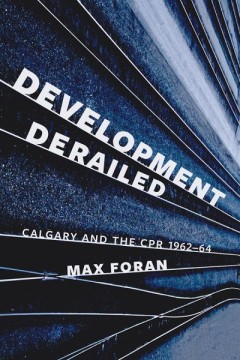Filter by
Icon, Brand, Myth The Calgary Stampede
An investigation of the meanings and iconography of the Stampede: an invented tradition that takes over the city of Calgary for ten days every July. Since 1923, archetypal “Cowboys and Indians” are seen again at the chuckwagon races, on the midway, and throughout Calgary. Each essay in this collection examines a facet of the experience—from the images on advertising posters to the ritual …
- Edition
- -
- ISBN/ISSN
- N 978-1-897425-05-3
- Collation
- -
- Series Title
- The West Unbound: Social and Cultural Studies
- Call Number
- -

Expansive Discourses Urban Sprawl in Calgary, 1945-1978
A groundbreaking study of urban sprawl in Calgary after the Second World War. The interactions of land developers and the local government influenced how the pattern grew: developers met market demands and optimized profits by building houses as efficiently as possible, while the City had to consider wider planning constraints and infrastructure costs. Foran examines the complexity of their int…
- Edition
- -
- ISBN/ISSN
- 978-1-897425-13-8
- Collation
- -
- Series Title
- The West Unbound: Social and Cultural Studies
- Call Number
- 6 x 9, 284 pages

Development Derailed Calgary and the CPR , 1962–64
What, in economic terms, was perceived to be a win-win situation for both parties fell prey to a conflict between corporate rigidity and an unorganized, ill-informed, and over-enthusiastic civic administration and city council. Drawing on the private records of Rod Sykes, the CPR’s onsite negotiator and later Calgary’s mayor, Foran unravels the fascinating story of how politics ultimately u…
- Edition
- -
- ISBN/ISSN
- 978-1-927536-08-1
- Collation
- -
- Series Title
- -
- Call Number
- 272 pages

Expansive Discourses Urban Sprawl in Calgary, 1945-1978
A groundbreaking study of urban sprawl in Calgary after the Second World War. The interactions of land developers and the local government influenced how the pattern grew: developers met market demands and optimized profits by building houses as efficiently as possible, while the City had to consider wider planning constraints and infrastructure costs. Foran examines the complexity of their int…
- Edition
- -
- ISBN/ISSN
- -
- Collation
- 284 pages
- Series Title
- -
- Call Number
- -

Development Derailed Calgary and the CPR , 1962–64
n June of 1962, the Canadian Pacific Railway announced a proposal to redevelop part of its reserved land in the heart of downtown Calgary. In an effort to bolster its waning revenues and to redefine its urban presence, the CPR proposed a multimillion dollar development project that included retail, office, and convention facilities, along with a major transportation centre. With visions of enha…
- Edition
- -
- ISBN/ISSN
- 978-1-927536-08-1
- Collation
- -
- Series Title
- -
- Call Number
- -
 Computer Science, Information & General Works
Computer Science, Information & General Works  Philosophy & Psychology
Philosophy & Psychology  Religion
Religion  Social Sciences
Social Sciences  Language
Language  Pure Science
Pure Science  Applied Sciences
Applied Sciences  Art & Recreation
Art & Recreation  Literature
Literature  History & Geography
History & Geography